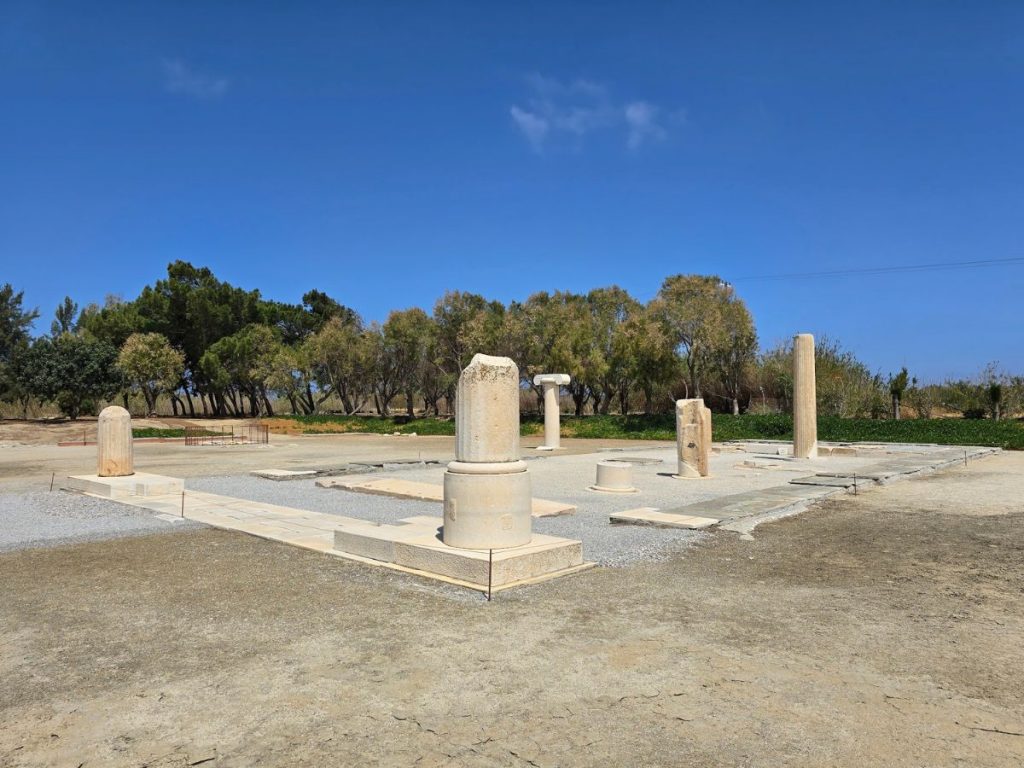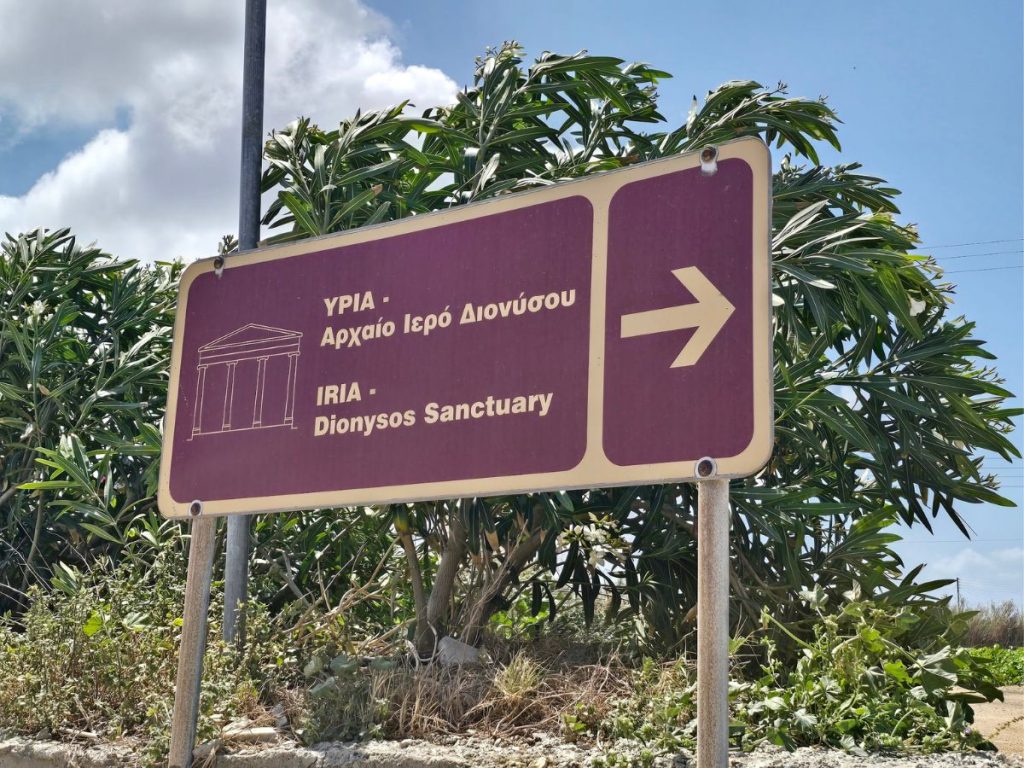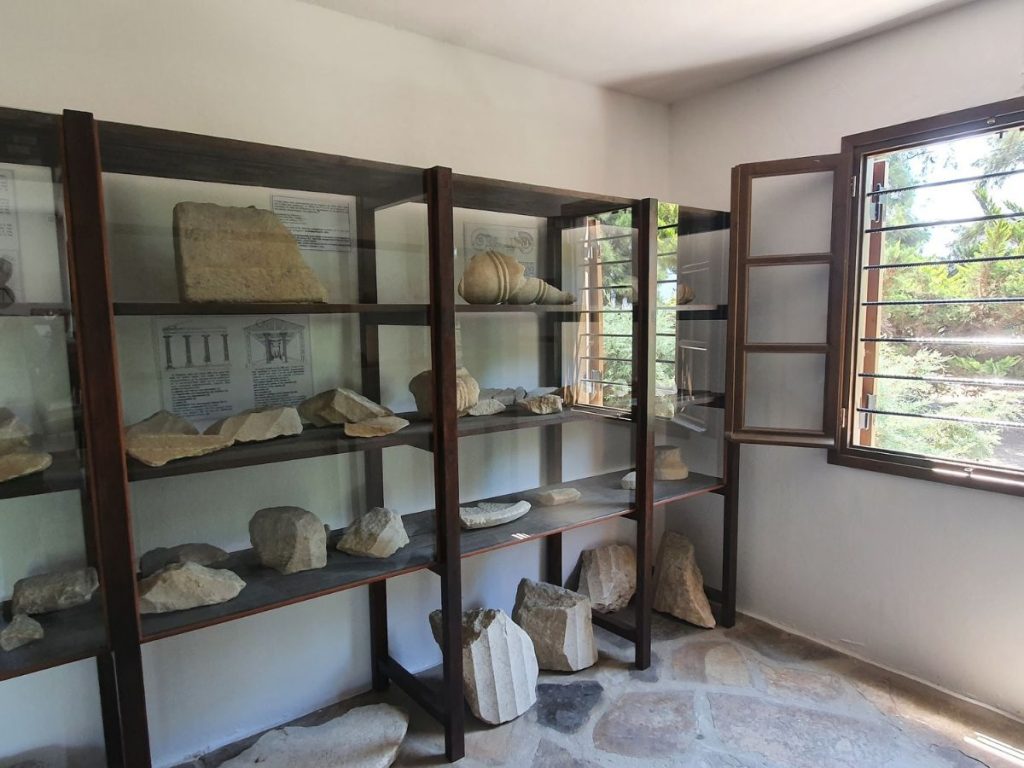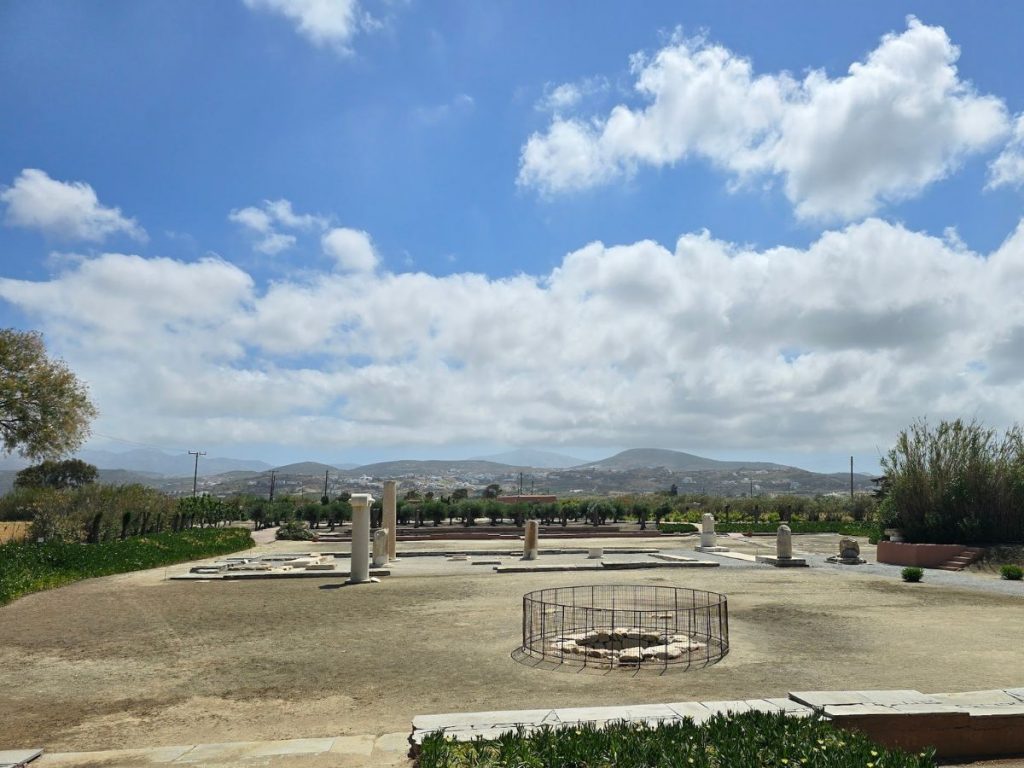The temple of Dionysus in Naxos is located just outside of Naxos Chora, and close to the airport.

Dionysus Temple in Naxos (Yria/Iria)
A temple dedicated to the God Dionysus is one of the three most important archaeological sites on the Greek island of Naxos (the other two being the Portara and the temple of Demeter).
I’ve visited this small archaeological site twice now, once in 2020 and once in 2024. Whether you should visit it or not depends on your interest in Ancient Greece and history. Certainly, your holiday in Naxos won’t be ruined if you decide to skip visiting the Dionysus Temple of Naxos.
So, add it in to a Naxos sightseeing itinerary if you happen to be passing by rather than making a special effort to reach it. Unless you have a keen interest in Greek archaeological sites, you are likely to find it a little underwhelming. Just being honest!
How to get to Temple of Dionysus, Yria
You can see the location of the temple here on Google maps. It is positioned south of Naxos town, and east of Naxos airport.
You can reach the airport by car, taxis or even bicycle. As the site is about 4kms from Naxos town, walking there is not recommended, and besides the road there is not so interesting.

You’ll see the typical brown tourist signposts pointing the way as you get closer to the Dionysus sanctuary. If you do drive, there is a small carpark with a water well where you can leave your car.

The small ticket office has regular entry at 3 Euros. Next to the ticket office is a toilet (inside the site itself there is not one).
Entering the Dionysus Sanctuary
When you have your ticket and walk through the gate, you’ll pass a small green building that resembles a garden shed on your left. That is the Dionysus site museum!
There are some informative boards which give context to the site, but the artefacts it contains are not particularly interesting.

It only takes 5 minutes to look around, and in fact I’d be surprised if you spent much longer than half an hour in total looking around the Temple of Dionysus archaeological site.
Walking around the Dionysus Temple Site
Once back outside, you find yourself walking along a path in a wide open space. The site is really built on a flood plain almost, and in fact flooding was one of the primary causes for the temple and site to have been rebuilt and redeveloped over its many ancient years.

The temple area itself has been to a large degree reconstructed. Still, it gives an impression of what it may have looked like. The setting (near a river and on a floodplain) harks at potential links to fertility.

THE HISTORY OF THE TEMPLE OF DIONYSUS YRIA
Here is a rough breakdown of the history of the site:
-
14th century B.C.:
- During the Mycenaean era, an open-air cult dedicated to the fertility of nature and people was established in the humid, fertile plain of Livadi.
- The religious activity was devoted to Dionysus, later known as the protector of Naxos.
- A marble basin, placed on top of a small hill in the marshy region, was used for offerings.
- Continuity of worship up to the construction of the first temple is evidenced by vessels and bones of sacrifices.
-
circa 800 B.C.:
- The first temple, consisting of one room with stone foundation and bricks, was built during the formation of Greek city-states.
- It is possible that from this period, the temple of Iria became the official sanctuary of the city.
-
circa 730 – 680 B.C.:
- The first small temple was replaced by a much larger one (160 sq. m.) constructed of local granite.
- It was a hall intended for mystery rites, marking a shift in the character of traditional worship to a more mysterious form, similar to many other ancient cults dedicated to fertility.
-
circa 680 – 580 B.C.:
- The third temple showcased main characteristics of monumental architecture, such as the (wooden) prostyle portico, the forerunner of the columnar facade of archaic temples, marble parts, and tripartite interior.
-
circa 580-570 B.C.:
- Work began on the fourth and largest temple, which has been restored.
- It is an archaic hekatompedon of Ionic order (280 sq. m.), the earliest example of Ionic Prostyle temple in marble.
- This temple documents previously unknown primary steps of monumental marble architecture, including the foundation of the facade and of the adyton, the column's shape, the impressive doorways, and the shaping of the entablature and marble pedimental roof.
-
1st century B.C. – 3rd century A.C.:
- The instability of the subsoil and the builders' lack of experience in setting foundations for such a large temple necessitated vast repairs during Roman times.
- In 41 B.C., both Dionysus, the God, and Antonius, the Roman general, who represented himself as “New Dionysus,” were worshipped at the same time in the temple at Iria.
- The dining hall was restored, and an enclosure (temenos) (4500 sq. m.) surrounded the sanctuary.
-
5th century A.C.:
- The temple was converted into an Early Christian basilica dedicated to St. George, whose early worship was common with Dionysus.
- The foundation of the little Byzantine church of St. George in the immediate vicinity of the ancient temple ensured the continuity of worship in this same place for 3,300 years.
-
12th century A.C.:
- After a devastating flood, the church was abandoned and built around a safer ground, resulting in the present church of St. George in Iria, utilizing material from the temple ruins.
And that’s about all you need to know! I hope you enjoyed reading this and are planning an awesome trip to Naxos. If you are, you might also find these travel guides helpful:
- Best time to visit Naxos
- Athens to Naxos Ferry Guide
- Where to stay in Naxos
- Naxos Tours and Day Trips
- Best beaches in Naxos
- Island hopping from Naxos
- Naxos to Ios Ferry information
- Naxos or Mykonos – Which Greek island is better and why
 Dave is a travel writer based in Greece with a passion for exploring the beautiful Greek islands and beyond. With an ambitious goal of visiting every Greek island (over 200!), he shares his experiences, recommendations, and travel tips through his blog and social media channels. Connect with Dave on Facebook, Twitter, Pinterest, and Instagram for daily travel inspiration, and lots of Greek travel ideas!
Dave is a travel writer based in Greece with a passion for exploring the beautiful Greek islands and beyond. With an ambitious goal of visiting every Greek island (over 200!), he shares his experiences, recommendations, and travel tips through his blog and social media channels. Connect with Dave on Facebook, Twitter, Pinterest, and Instagram for daily travel inspiration, and lots of Greek travel ideas!